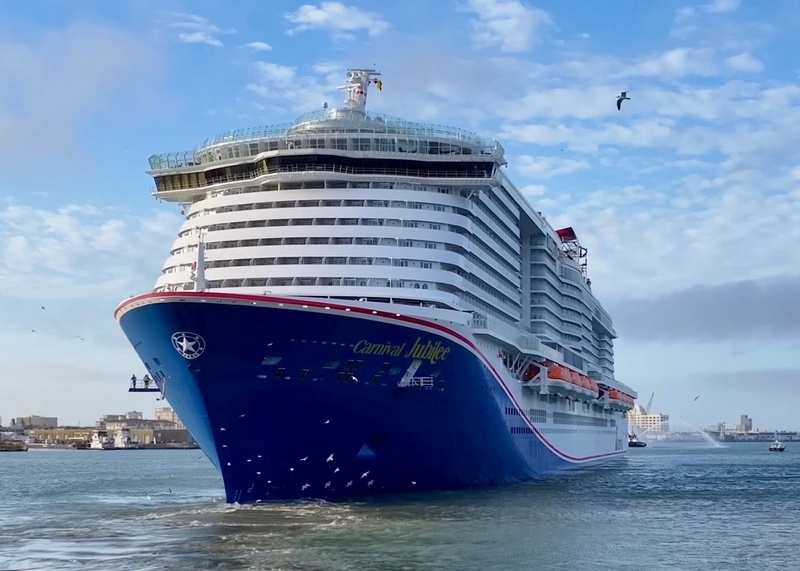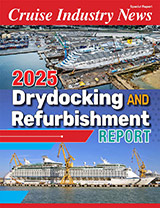Carnival Corporation has released its 14th annual sustainability report detailing meaningful progress in its six sustainability focus areas, including toward its highest-priority goals supporting climate action to reduce greenhouse gas (GHG) emissions and promoting a circular economy model to reduce waste.
The company said achieved several 2030 environmental goals well in advance and is tracking ahead of schedule on a number of other key targets, including GHG intensity reductions. Details are outlined in the full report, titled “Sustainable from Ship to Shore,” and available on the company’s website at www.CarnivalSustainability.com.
“Thanks to our 160,000 remarkable team members who show up every day with passion and dedication, 2023 was a year of significant accomplishments across the board,” said Josh Weinstein, CEO and chief climate officer for Carnival Corporation. “We achieved record-breaking financial performance, welcomed three stunning new ships, expanded our global presence to over 800 incredible destinations and communities, and delivered unforgettable happiness to 12.5 million guests by providing them with extraordinary cruise vacations.\
Added Weinstein: “We also demonstrated our continued commitment to leading the way in making cruising more sustainable, marked by amazing progress toward reaching – and in many cases, exceeding – our vital 2030 environmental performance targets. Since we’re so aggressively tracking toward all our 2030 sustainability goals, we’re evaluating new interim targets along our pursuit of net zero GHG emissions by 2050.”
Highlights;
- GHG Intensity: Tracking toward its 2030 goal four years ahead of schedule, the company formally committed to reducing its GHG intensity by at least 20% by 2026 (versus 2019 levels; measured on a lower berth capacity basis). The company expects this performance to put it ahead of the International Maritime Organization’s (IMO) 2030 carbon intensity reduction timeline.
- Shore Power: Surpassing its 2030 goal in 2023 – seven years early – the company now leads the industry with 64% of its fleet shore power-capable, meaning it has twice as many ships able to “plug in” than there are ports equipped to provide shore power. The company is now working closely with port authorities worldwide to foster increased adoption of this important technology.
- Particulate Matter: Recording a 68% reduction in absolute particulate matter emissions (versus the 2015 baseline), the company continued accelerating well beyond its 2030 goal to reduce particulate matter emissions by 50%.
- Food Waste: Achieving a 38% reduction in food waste per person (versus the 2019 baseline), the company came within two percentage points of reaching its 2025 goal to reduce food waste by 40% and continues efforts toward achieving its 50% food reduction goal by 2030.
- Single-Use Items: As of 2023, the company had cut down enormously on single-use items and plastics, eliminating ~500 million single-use items from the fleet by the end of last year (compared to 2018) – outpacing its 2030 50% reduction goal, which it initially surpassed in 2021, nine years early.
- Advanced Waste Water Treatment Systems: Finishing the year just a few points shy of its 2030 goal to outfit 75% of its fleet capacity with AWWTS, in 2023, the company had completed installation of systems covering 70% of the company’s fleet capacity, purifying even more water used onboard to municipal-water quality before releasing it back to nature.




